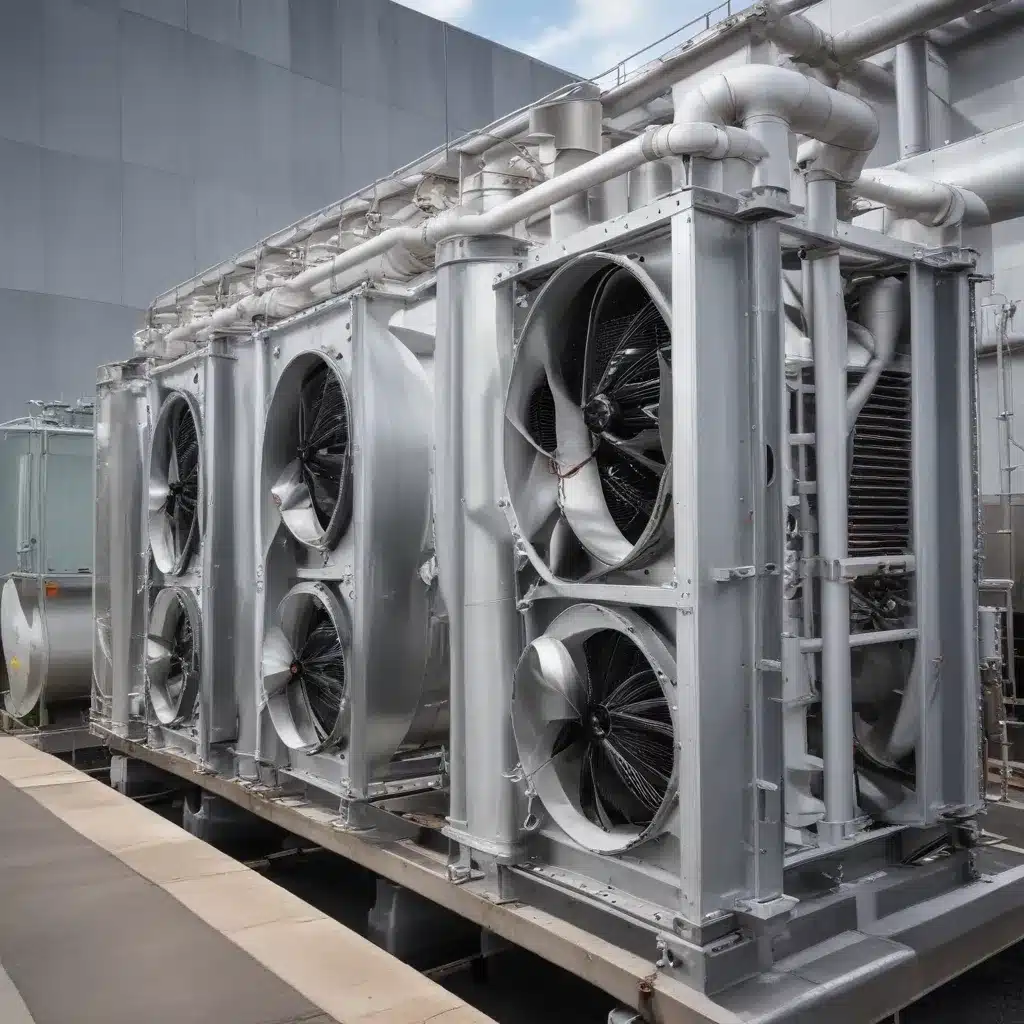
Unlocking the Power of Air-Cooled Heat Exchangers in Waste-to-Energy Applications
In the fast-paced world of sustainable energy, waste-to-energy facilities have emerged as crucial players in the quest for a greener future. At the heart of these operations lie air-cooled heat exchangers, workhorses tasked with efficiently managing the intricate thermal dynamics. As an industry expert, I’m excited to share practical insights and proven strategies to optimize the performance of these essential components, enabling waste-to-energy plants to operate at unprecedented levels of efficiency and reliability.
Harnessing the Angle of Inclination
One often-overlooked aspect of air-cooled heat exchanger design is the angle of inclination. Recent research conducted by a team of renowned thermal engineers has shed light on the significant impact this subtle design feature can have on overall system performance.
The study, published in Applied Thermal Engineering, revealed that a mere 30-degree tilt in the heat exchanger’s orientation can boost thermal performance by a remarkable 0.5%. While this may seem like a modest gain, in the world of waste-to-energy, where every percentage point counts, such optimization can make all the difference.
The researchers attributed this improvement to the way the angle of inclination influences the flow dynamics within the heat exchanger. As the heat exchanger is tilted, the flow patterns shift, creating a low-velocity core that migrates to one side. Understanding and leveraging this phenomenon is crucial when designing systems with multiple heat exchangers, as it allows for strategic positioning of critical components to maximize their performance.
Maximizing Efficiency through Plenum Depth
In addition to the impact of inclination, the study also highlighted the significant role of plenum depth in enhancing air-cooled heat exchanger performance. By increasing the plenum depth (without changing the inclination), the researchers were able to achieve an even more impressive boost in efficiency – around 1%.
The plenum, a critical component in air-cooled heat exchangers, serves as the transition zone between the fans and the heat transfer surface. By optimizing the plenum depth, operators can enhance the uniformity of the airflow distribution, reducing turbulence and ensuring more efficient heat transfer. This simple adjustment can yield substantial benefits, particularly in high-demand applications where every improvement in thermal management translates to increased energy output and cost savings.
Leveraging Flow Dynamics for Optimal Positioning
As we adjust the inclination of air-cooled heat exchangers, the resulting flow dynamics become an important consideration in system design. The study revealed that the low-velocity core, which shifts to one side as the heat exchanger is tilted, can have a profound impact on the performance of neighboring components.
This insight is particularly relevant in waste-to-energy facilities, where multiple heat exchangers often operate in close proximity. By understanding the flow patterns and strategically positioning critical equipment, operators can ensure that each component is situated in the optimal airflow zone, maximizing its efficiency and contribution to the overall system.
Applying Learnings to Waste-to-Energy Facilities
The findings from this research hold immense value for waste-to-energy facilities, where efficiency, reliability, and sustainability are paramount. By incorporating these insights into the design and optimization of air-cooled heat exchangers, operators can unlock a new level of performance, driving tangible improvements in energy generation, operational costs, and environmental impact.
Consider a typical waste-to-energy plant, where the efficient conversion of waste into electricity or heat is essential. By carefully adjusting the inclination and plenum depth of the air-cooled heat exchangers, the facility can enhance the heat transfer capabilities, ensuring that more of the generated thermal energy is captured and put to productive use.
Moreover, the strategic positioning of heat exchangers based on the understanding of flow dynamics can lead to enhanced synergy between system components, minimizing inefficiencies and maximizing the overall thermal management capabilities of the facility.
Embracing a Culture of Continuous Improvement
In an industry where every percentage point of efficiency matters, the insights gleaned from this research underscore the importance of a culture of continuous improvement. By taking a proactive approach to optimizing air-cooled heat exchanger performance, waste-to-energy facilities can stay ahead of the curve, securing their position as leaders in sustainable energy production.
At https://www.aircooledheatexchangers.net/, we are committed to providing our clients with the cutting-edge knowledge and technical expertise necessary to achieve these performance-enhancing adjustments. Our team of seasoned engineers and thermal management specialists are well-versed in the latest advancements in air-cooled heat exchanger design, maintenance, and optimization, ensuring that our clients can leverage every possible opportunity to enhance their operations.
Whether you’re managing an established waste-to-energy facility or planning a new, state-of-the-art project, we invite you to explore our comprehensive suite of services and solutions. From detailed system assessments to custom-engineered heat exchanger upgrades, we are here to help you unlock the full potential of your thermal management systems, driving greater efficiency, reliability, and sustainability in your waste-to-energy operations.
Conclusion: Unlocking a Greener Future through Optimized Thermal Management
As the world continues to embrace the transition towards renewable and sustainable energy sources, the role of waste-to-energy facilities has become increasingly crucial. At the heart of these operations lie air-cooled heat exchangers, and by optimizing their performance through strategic design adjustments and a deep understanding of flow dynamics, we can unlock a new era of efficiency and environmental stewardship.
By leveraging the insights and strategies outlined in this article, waste-to-energy facility operators can take tangible steps towards enhancing their thermal management capabilities, driving improved energy generation, cost savings, and a reduced carbon footprint. Together, we can forge a path towards a greener future, one optimized air-cooled heat exchanger at a time.

